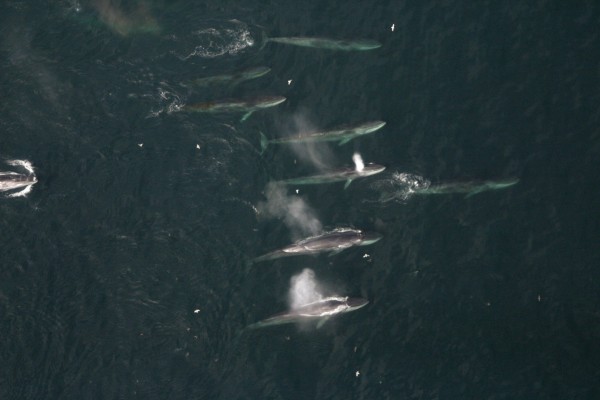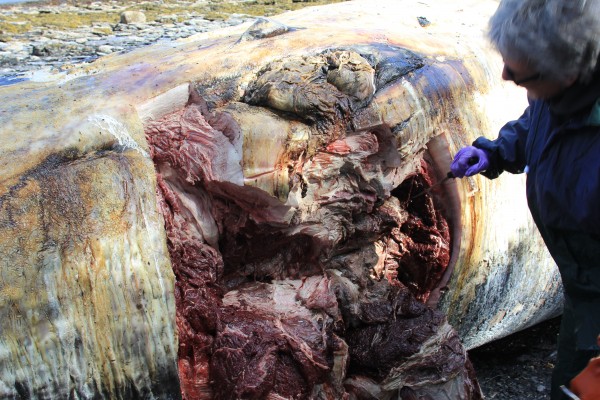Fin whales discovered dead near Kodiak Island
June 18, 2015
Deborah Mercy
907-274-9698

At least nine fin whales have been discovered floating dead in waters from Kodiak to Unimak Pass since late May.
“It is an unusual and mysterious event that appears to have happened around Memorial Day weekend,” said Kate Wynne, an Alaska Sea Grant marine mammal specialist and University of Alaska Fairbanks professor. “We rarely see more than one fin whale carcass every couple of years.”
On May 23, Wynne received a message from National Oceanic and Atmospheric Administration enforcement officers that crew members on the Alaska Marine Highway System's ferry MV Kennicott had photographed dead whales. During the next two weeks, boaters, fishermen and pilots reported floating dead whales in the area. Based on photos submitted with these reports, Wynne and her NOAA collaborators determined that at least nine fin whales died in a relatively small area. The dead whales are now drifting along both sides of Kodiak Island.

“It is really perplexing for a number of reasons,” Wynne said. “They appear to have all died around the same time. And the strange thing is they are all one species, with the exception of one dead humpback whale found in a different location.”
“So part of the mystery is why just fin whales? Why not their prey? Why are there not other consumers in the system showing up in mass die-off mode?” said Wynne.
Fin whales, an endangered species, grow to 70 feet long. They use baleen in their mouths to strain copepods, krill and small fish from seawater. The whales feed in tight formations, so Wynne thinks the dead whales could have consumed something toxic around the week of May 20.
Only two carcasses have come ashore. Wynne and fellow marine mammal specialist Bree Witteveen were able to take samples from one. The whale had been dead and floating in the water for a week. Samples were sent to a lab for biotoxin analysis.
Wynne has been working with NOAA’s marine mammal stranding network in Juneau and with Kodiak residents.

“There is a network of interagency people working together to collect as much information as possible on the whales," she said. "We are asking people to watch for, report and photograph dead birds, fish or anything that seems unusual to determine if it is related to the dead whales.”
“In the meantime we are mapping and tracking reported whale carcasses, collecting water samples to look for harmful algal blooms and recording changes in sea water temperature," she said. "So far there is no ‘smoking gun’ in this environmental mystery.”
ADDITIONAL CONTACTS: Kate Wynne, 907-486-1517, kate.wynne@alaska.edu, and Bree Witteveen, 907-486-1519, bree.witteveen@alaska.edu


